It’s easy to miss them as you glide up to the top floor of the new Westgate Centre. But glance to your right and there on the wall is a significant part of Oxford’s history on show. A collection of decorated tiles that once served as the flooring to the medieval cloisters of Greyfriars friary. First laid out as part of a large complex of buildings alongside Oxford’s old fortifications near the west gate of the town in the 13th century, they are now in the 21st century set high on the wall above the lifts and next to the escalators that take you up to the roof terrace of the latest incarnation of a shopping centre to occupy this part of the city. Now they sit next to TK Max and opposite Ann Summers underwear shop. I am not sure the friars would have approved. But gaze up and you cannot help but admire the craftsmanship, the simplicity of the patterns combining small and larger hand-made tiles into colourful designs, and the wonderful white slip decorations including daisies, fleur-de-lys, half-moons and a variety of curved four-sided stars. But perhaps it is the worn nature of the pavement that I find most moving. The marks and mounds in the clay made by the perambulations of generations of barefooted friars during the 300-years that they lived here.
And to think it might have been buried under concrete. In 2016 a team from Oxford Archaeology had been nearing the end of the 13 months set aside to excavate the site before handing it over to Westgate’s new construction. They’d made some amazing new discoveries, including 58 burials, since it was last dug up in the 1960’s. But the most exciting was yet to come. Two and a half days before the heavy machinery was due to be sent in, a phone call came through to the office. A decorated floor tile had just been uncovered. And it seemed it might be the first of many. What happened next was a race against the clock. 350 tiles in total lay buried – all of which had to be cleaned, digitally photographed, marked up and lifted in record time to meet the promised deadline. They made it. And the resulting painstaking reconstruction in amongst the walkways of Westgate is what we see today.
But to imagine it in all its glory requires a little imagination.
The Greyfriars or Friars Minor were a preaching order founded by St Francis in Pisa in 1210. On 10 September 1224, a small company of them landed in England and were given land in Oxford by local tradesmen to set up a community, first within the city walls, and later in an area to the west, near the castle, the building work by then supported by King Henry III. They got special permission to build a large church into the city walls, and as well as a cloister with its covered pavement of pretty tiles around the four sides of a grassy quadrangle, there was a chapter house, vestry, study rooms, two libraries, as well as dormitories, an infirmary, kitchen, and dining room. They built a wash house, lavatories that flushed through a stone lined water tunnel, and constructed a mill in the nearby Trill Mill Stream. And then they had the extensive gardens and orchards, that they called Paradise. By this time, it was attracting students from abroad and also wealthy sponsorship including that Henry’s brother Richard Plantagenet, who in his death chose to have his heart buried in the choir of the church. This was a project on a enormous scale.
Sworn to a life of poverty, they wore coarse habits and shoes were forbidden even in the coldest of temperatures. They were not allowed pillows, kept their heads uncovered and were strictly vegetarian. And despite all this they were by all accounts a jolly lot – described as ‘always cheerful and laughing’ as well as prone to fits of the ‘giggles’. Maybe this is what appealed to Roger Bacon, perhaps the most famous of the Greyfriars. Scholar, alchemist, astronomer, mathematician he was the first to use empirical evidence for his ideas and teaching. Just think, his feet almost certainly trod these tiles. Perhaps it is here during his meditations that he had his eureka moments – he is credited with inventing the magnifying glass and recording the formula for gunpowder. Indeed the tower in which he worked (where Folly Bridge is now) from which fiery experiments and explosions were often recorded, is thought to be the inspiration for the tower of Isengard, the stronghold of the wizard Saruman in JRR Tolkien’s stories from Middle Earth – guardian of the Isis, it does just about work. Bacon died at the friary in June 1292 and was buried somewhere underneath the goods-in entrance of today’s shopping precinct.
But as was the case with many other religious houses, by the time of the Reformation, the Oxford Greyfriars were no longer behaving as strictly as their forefathers. One such culprit reported in the university records was Friar Arthur who was seen ‘in a chamber at the sign of the Bear with a woman in a red cap . . . both locked together.’ The libraries were in a state of disrepair, corruption rife. After the Act of Dissolution in 1536 the Oxford Greyfriars friary was one of the first to go; their building materials were sold off or used elsewhere, and while some of the land was turned over to what was to become ‘the best kitchen garden in England’, local industry took over, breweries, abattoirs and tanneries, interspersed later by streets of terraced housing, their name ‘The Friars’ the only reminder of what went before.
From where I stand it’s an easy stroll to St Ebbe’s Church, its wonderful beaks head Norman doorway surviving intact from the 11th century, one of the few remnants from the Greyfriars era. It is left to the street names to provide us with clues to the history of this part of Oxford; Roger Bacon Lane, Greyfriars Place, Paradise Square. So while the surroundings in which this medieval pavement finds itself may seem a little incongruous to an order of friars once forbidden to engage in anything as ungodly as commerce or the exchange of money, I am delighted that these beautiful, decorated tiles have been saved. And if you find yourself this way, en-route to the Curzon cinema perhaps, you should spare some time to stop a while and look. I think you will like them.
Contributing photographer John Milnes
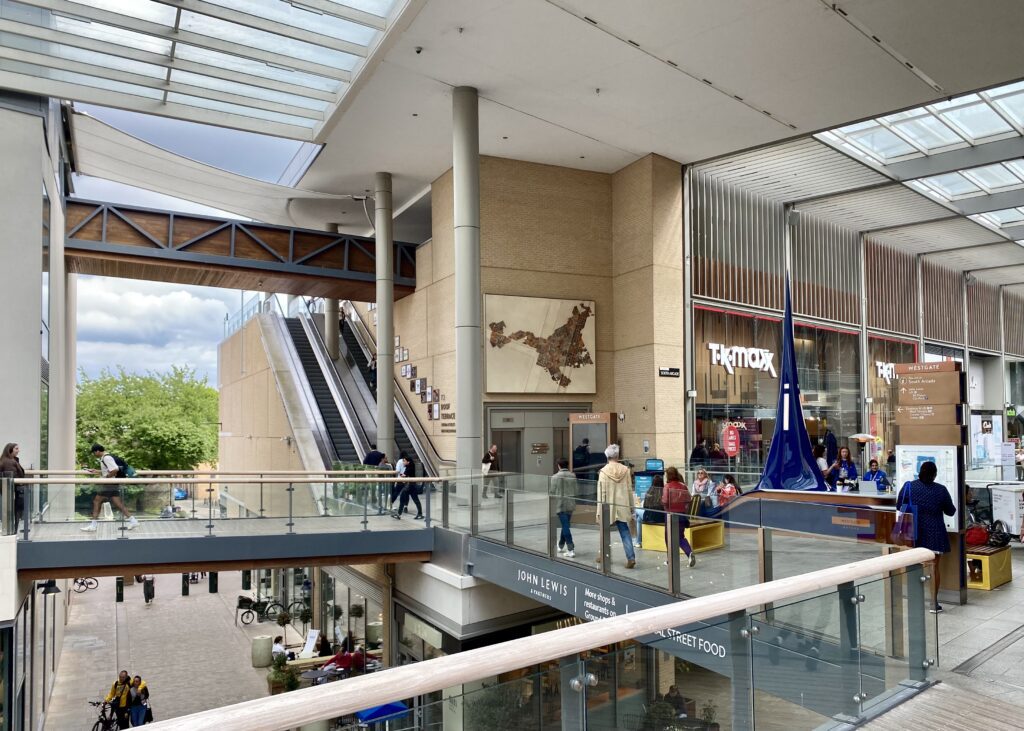
The tiles are located on the upper level of the Westgate Centre to the left of TK Max.
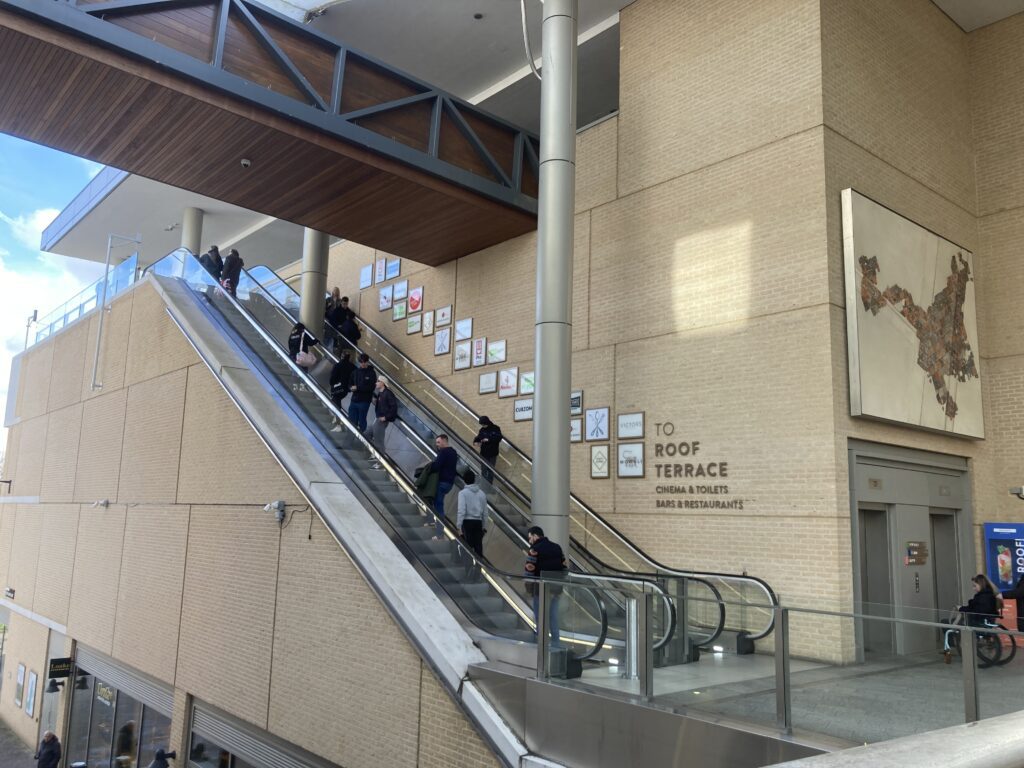

A team from Oxford Archaeology excavate the site. ©Oxford Archaeology

Representatives from the modern Greyfriars visit the site in 2016. ©Oxford Archaeology
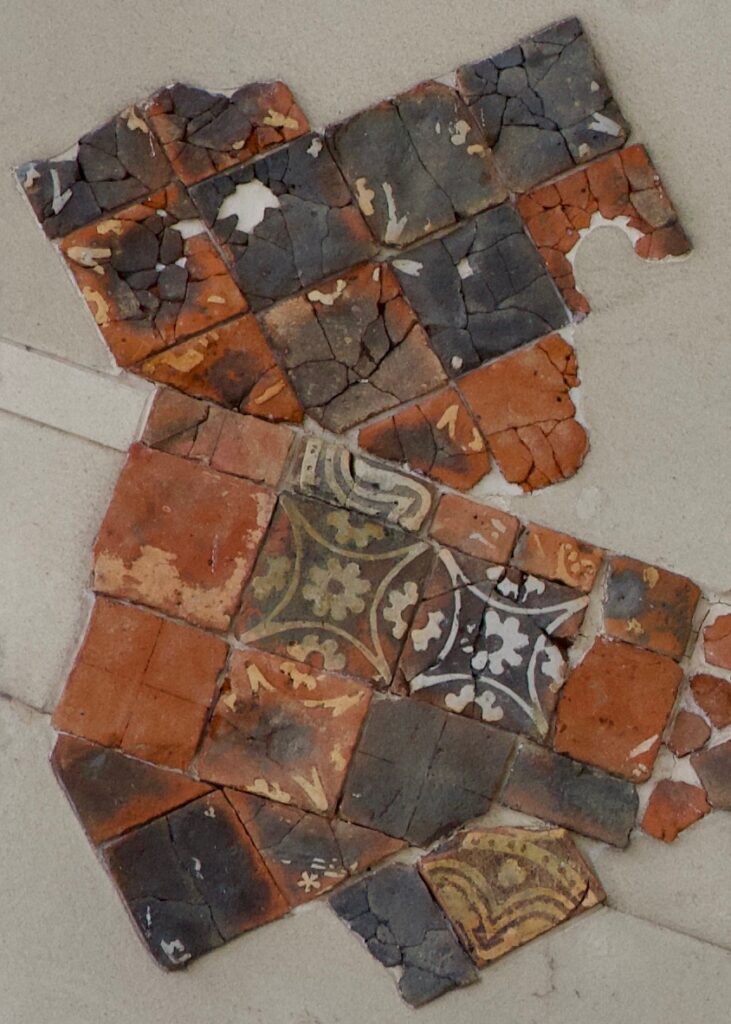
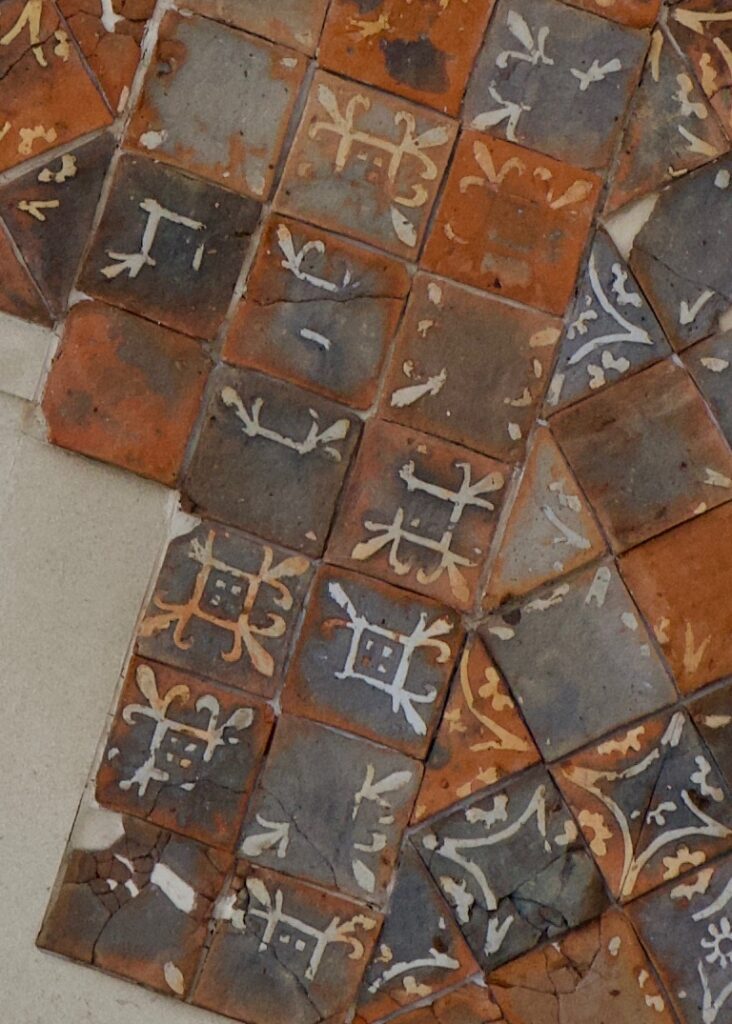
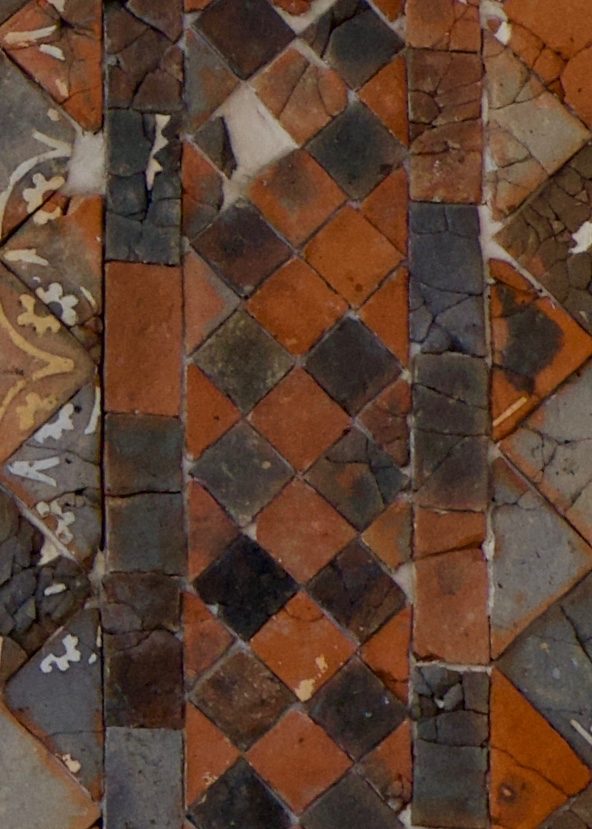
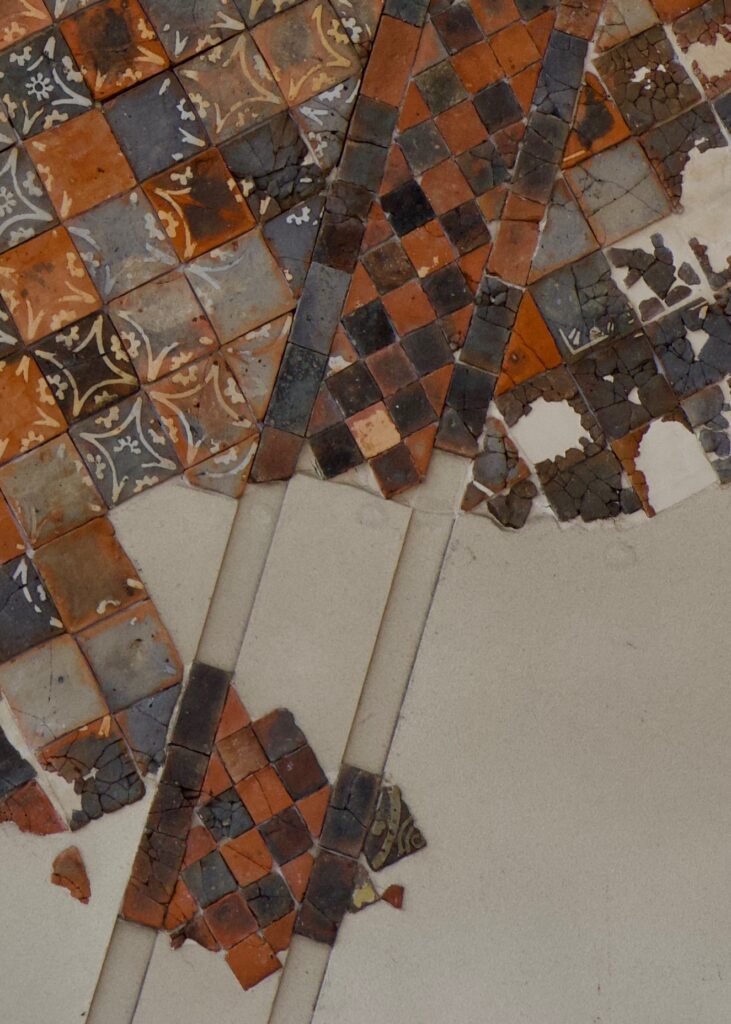
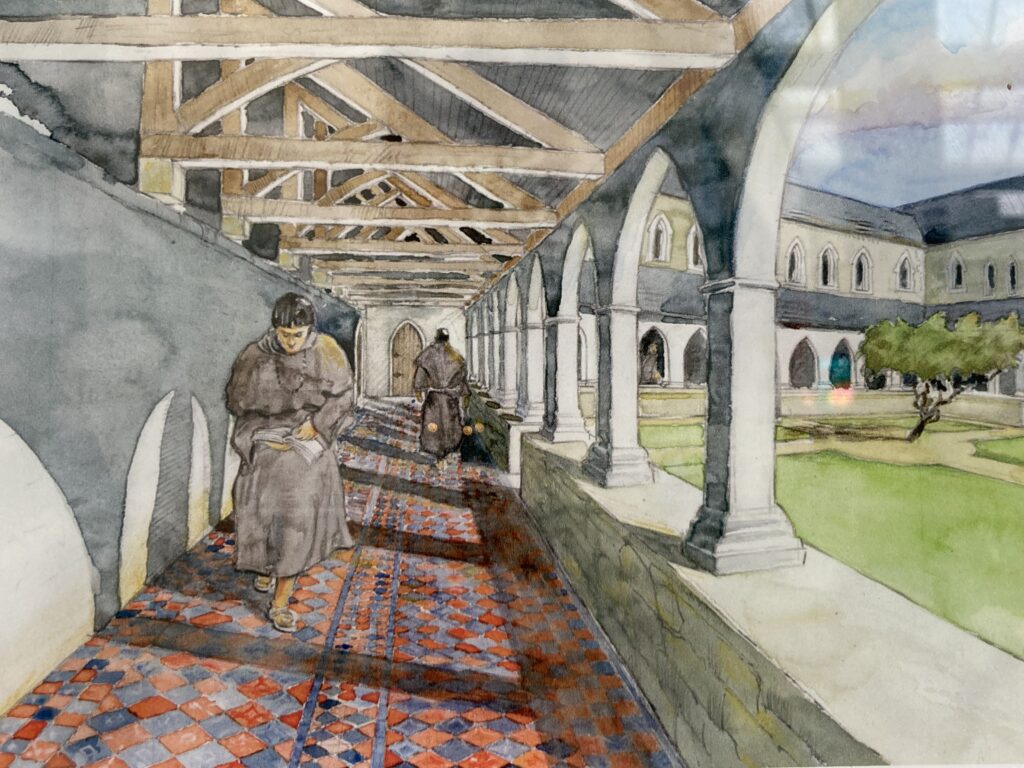
A reconstruction of what the cloisters may have looked like by Mark Gridley
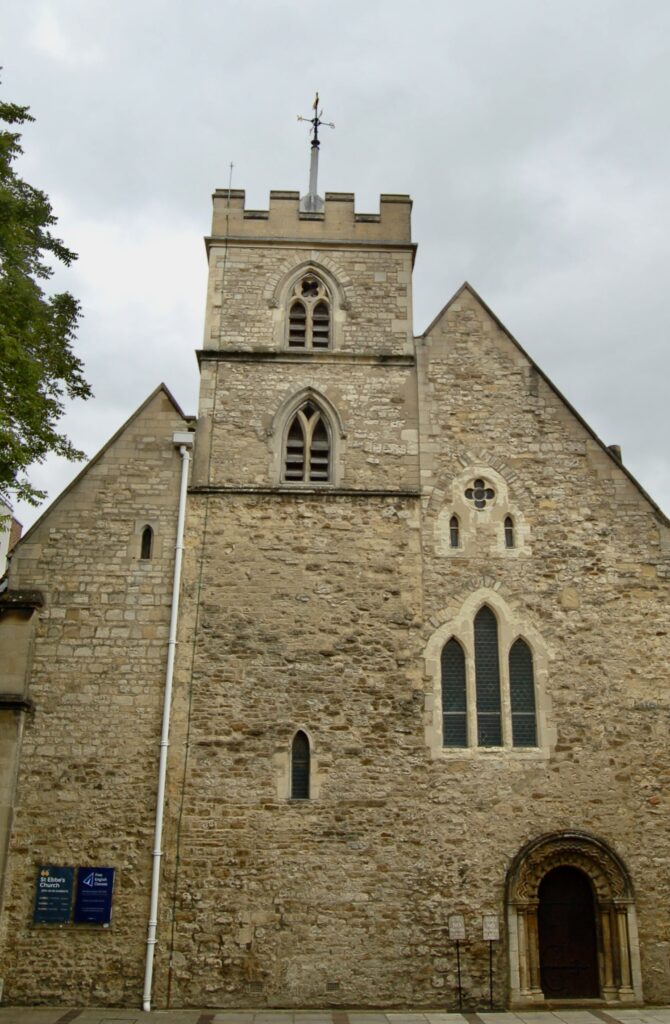
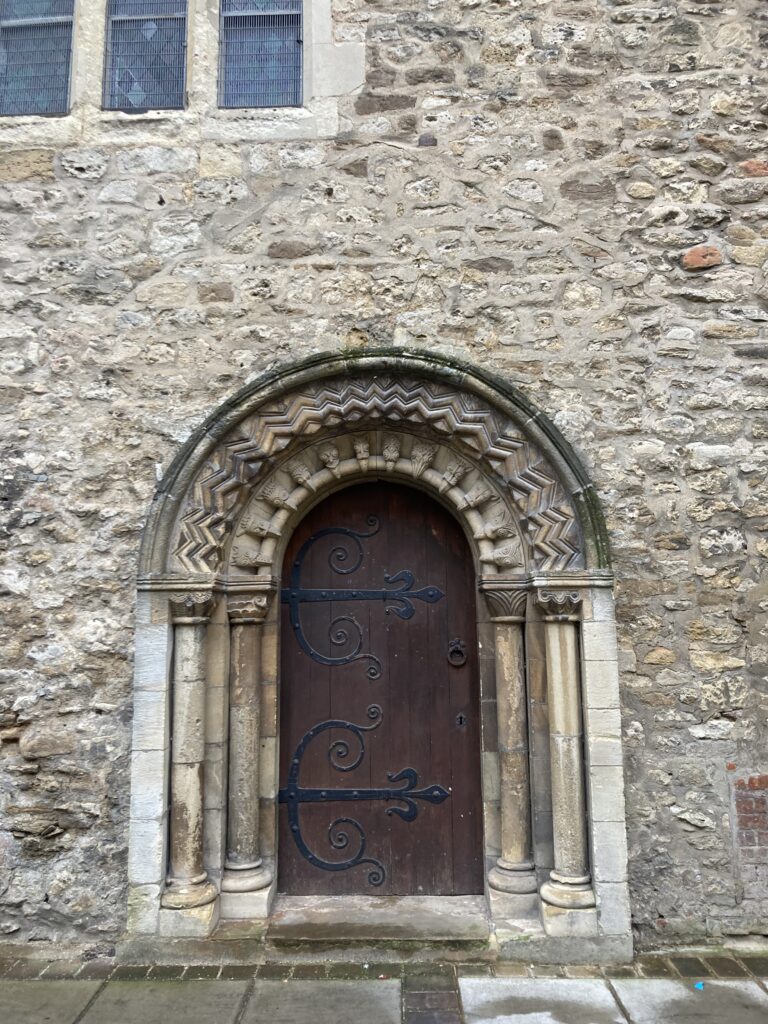
St Ebbe’s Church. Looking at it you can see the different eras of building. The Norman doorway is all that remains from its Norman era, and is well worth a visit on your way to Roger Bacon Lane, a short cut through to Turn Again Lane.
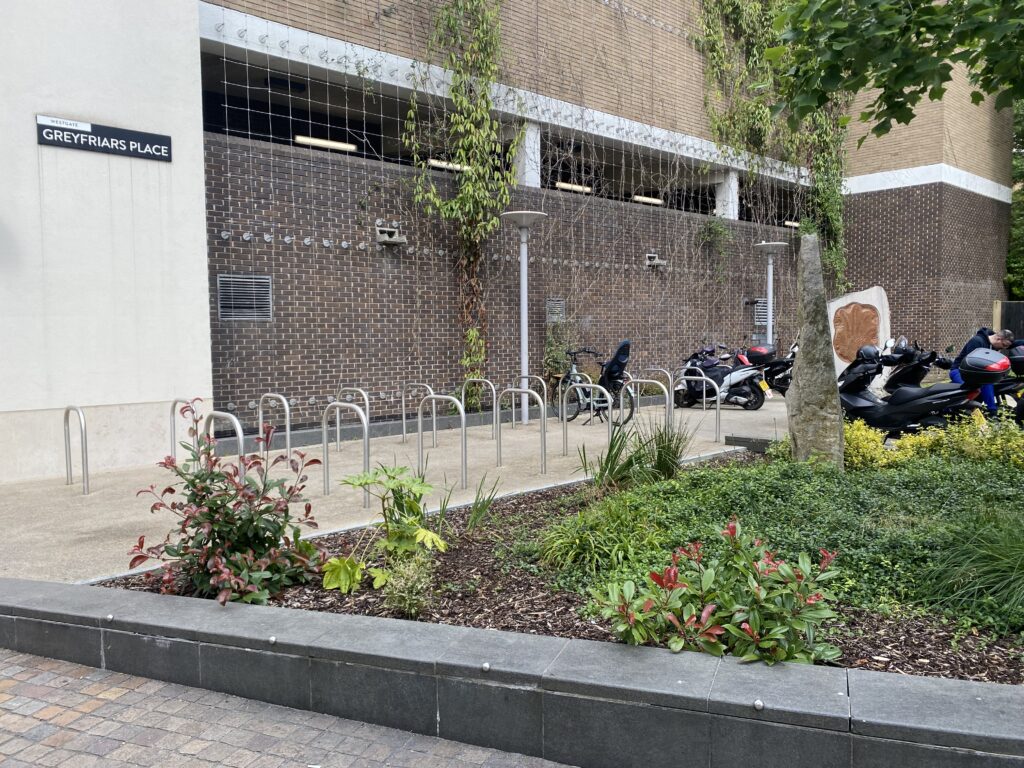
Greyfriars Place in 2024
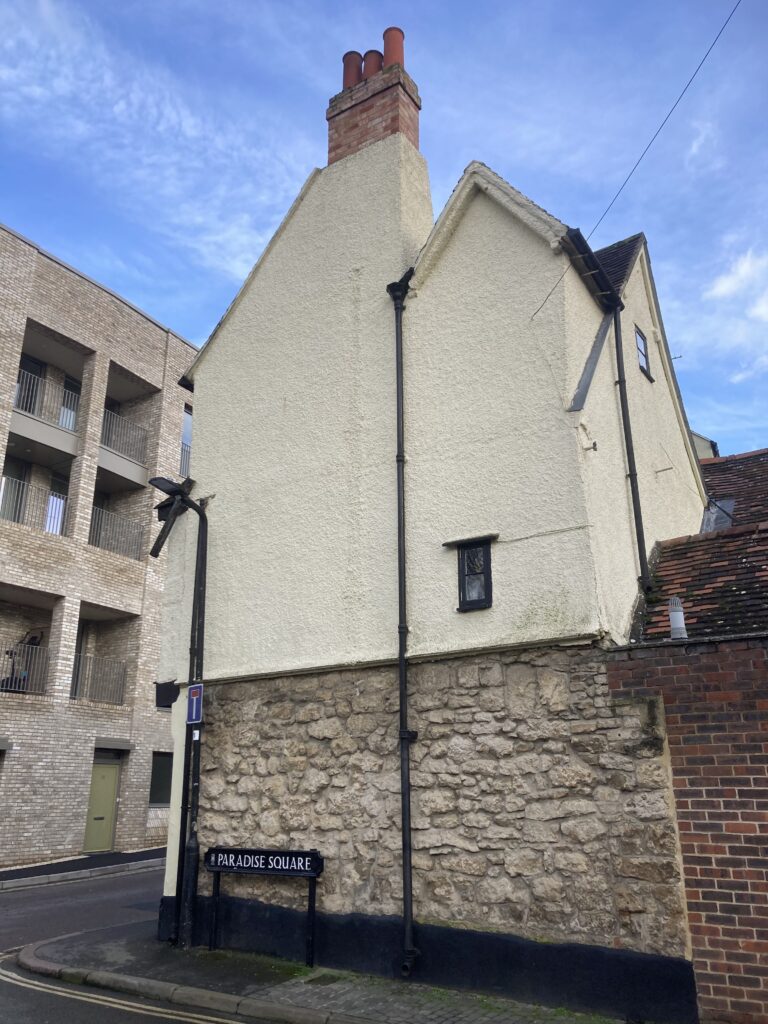
Paradise Square, where once the gardens and orchards of the Greyfriars were laid out.
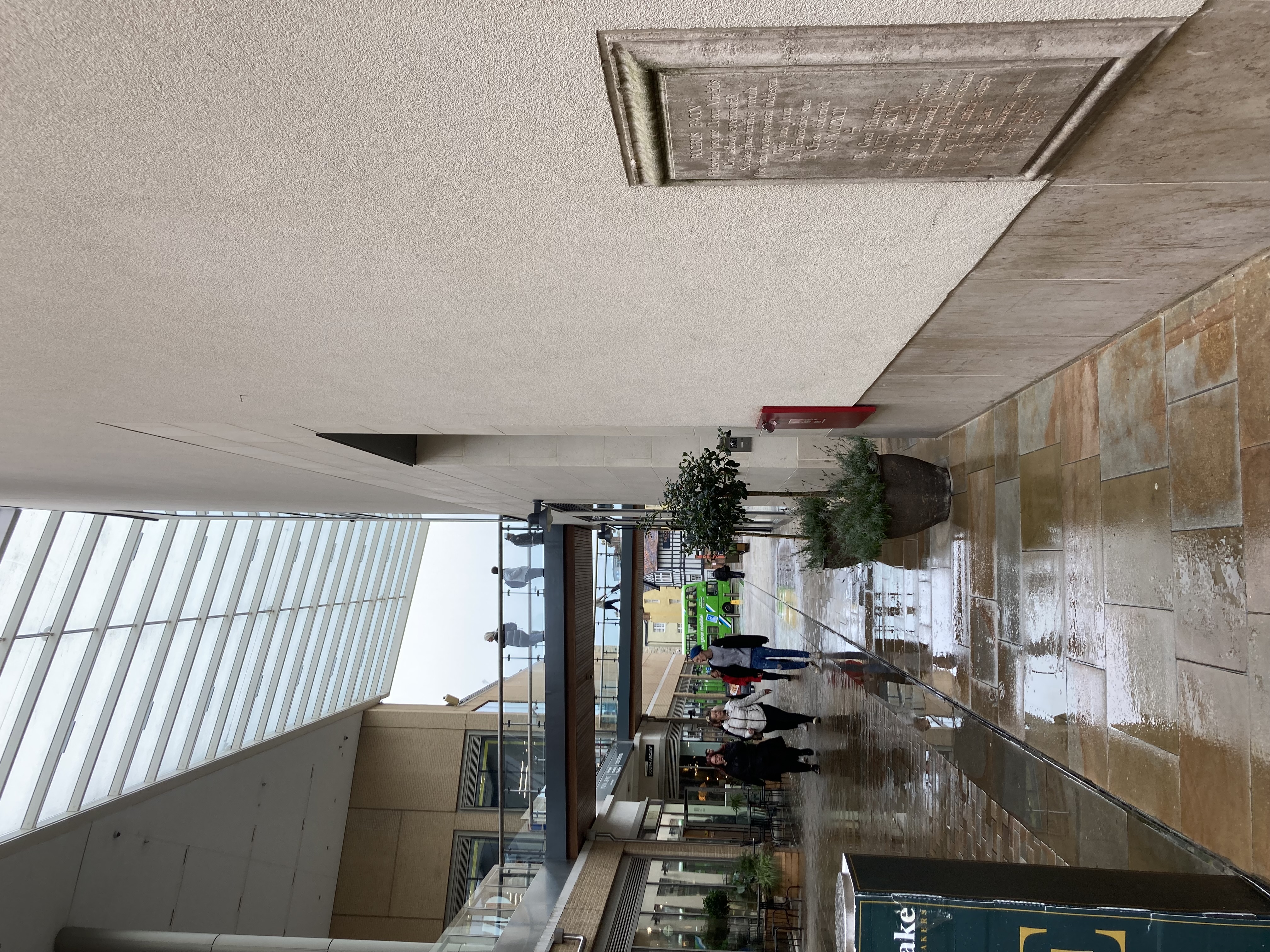
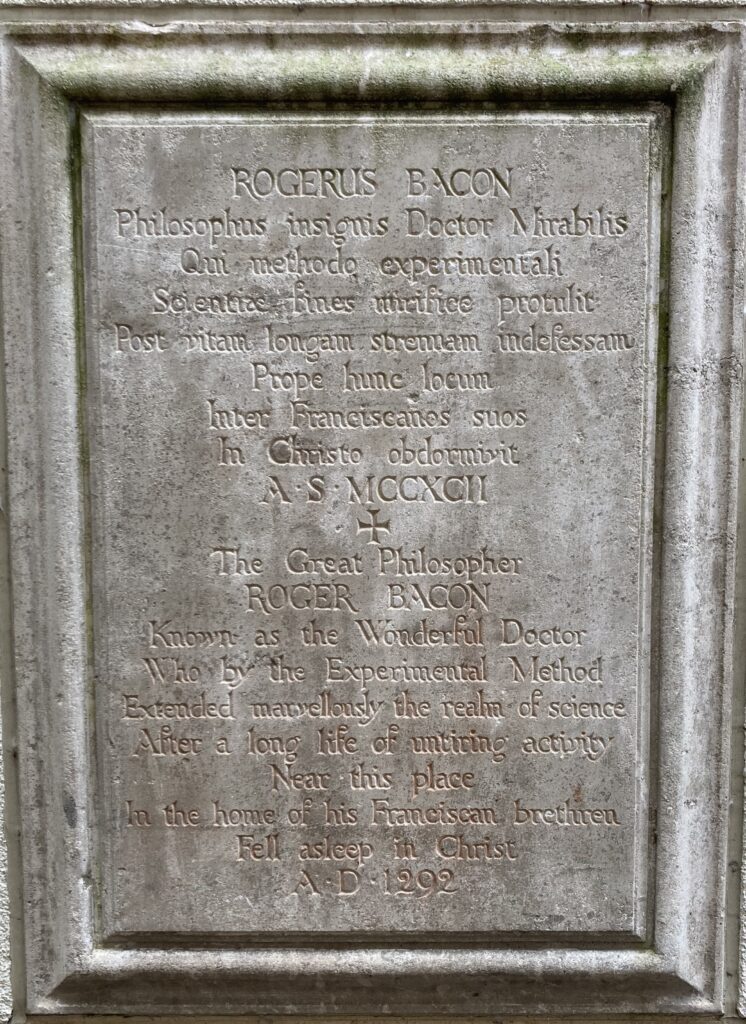
A plaque on the lower level of the shopping centre is dedicated to Roger Bacon, known as ‘Doctor Mirabilis’, the wonderful doctor.
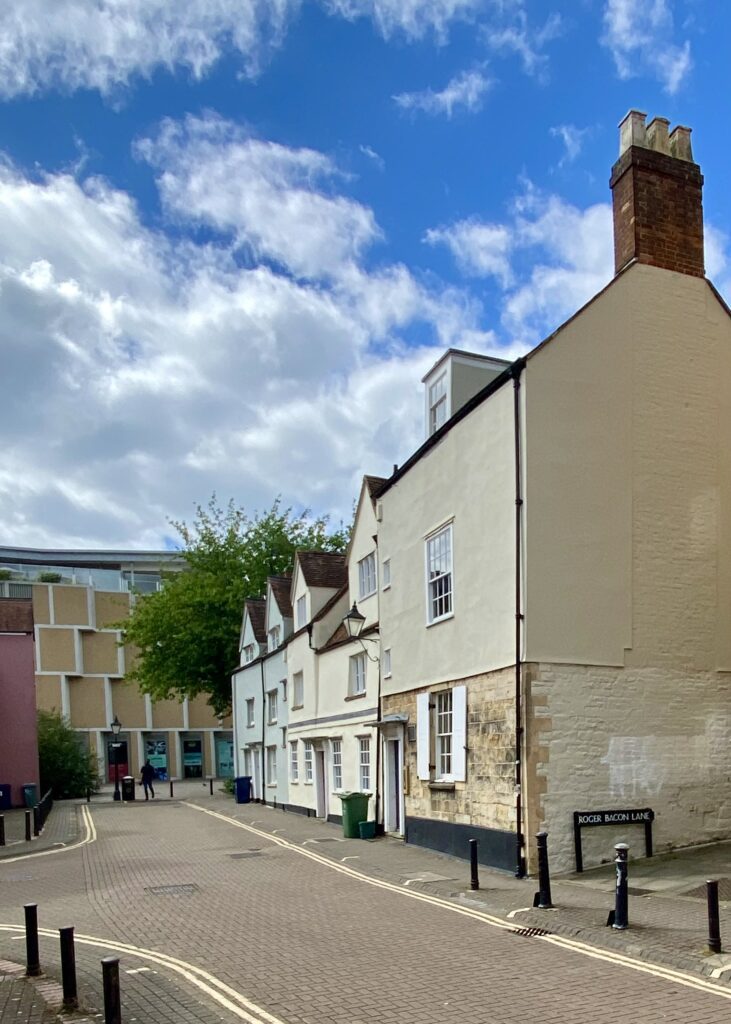
Roger Bacon Lane on the corner of Turn Again Lane looking west towards the shopping centre. Note the three pretty 17th century houses purchased by the Oxford Preservation Trust in 1971 to avoid them being demolished.
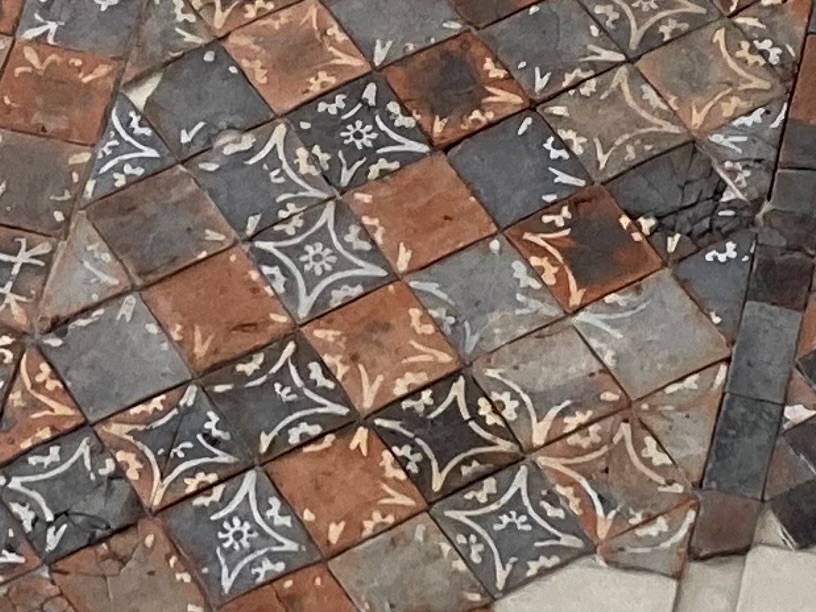
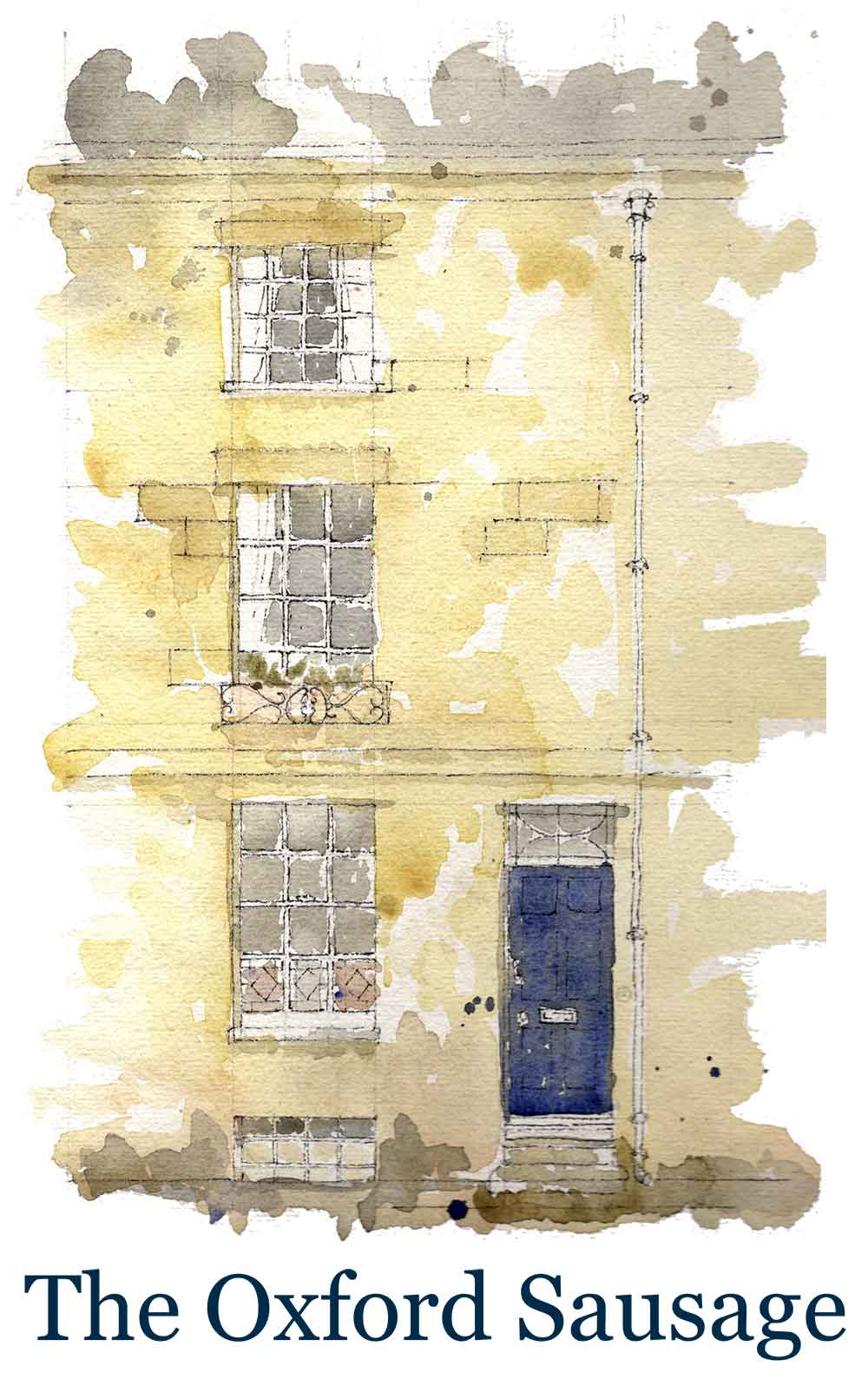
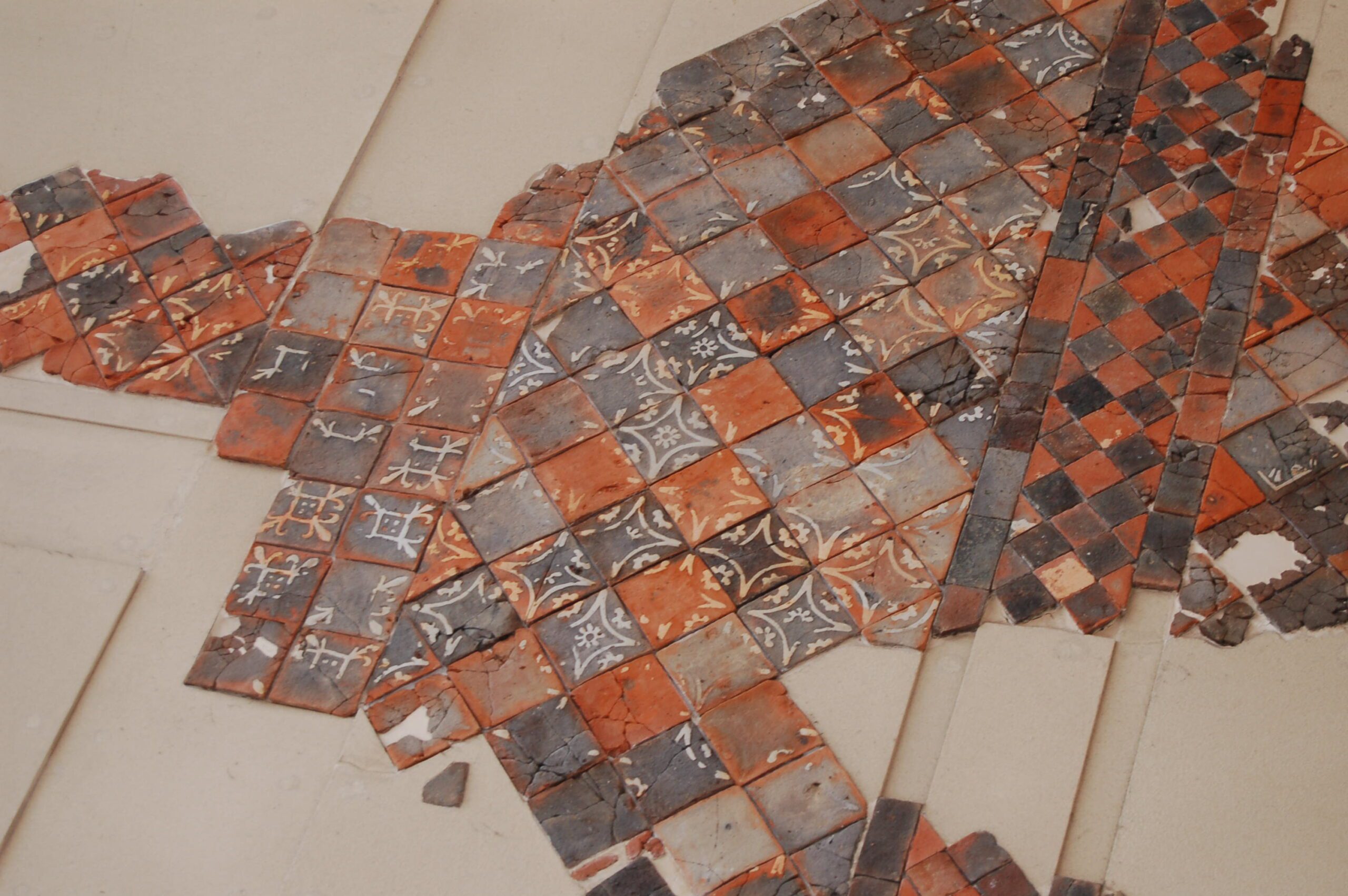
1 Comment
Join the discussion and tell us your opinion.
Must look at these tiles next time I’m in the Westgate, a place I try to avoid. Tiling seems to be a lost art. We’re just back from Italy where we went to Pompeii and Ercolano. And the tiles were stunning. Tiny pieces of marble worked in the most intricate of designs. Amazing what you can do with a few slaves. We also went to Rome and chanced to go into the Basilica di Santa Maria Maggiore near the Termini station. The tiling floor was also stunning. Nobody seems to do this any more.